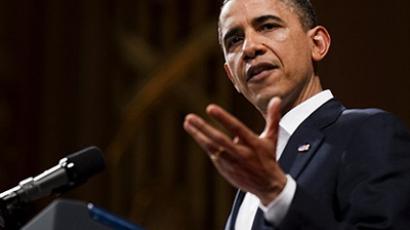Responsibility to protect ... Whom?

When it comes to receiving international help, not all countries are created equal. US and NATO officials said the decision to use airstrikes against the Libyan government were made under the doctrine of responsibility to protect Libyan civilians.
“The responsibility to protect was born out of the failure to respond in Rwanda and Srebrenica, the failure to respond to holocausts and genocides around the world,” said Sapna Chhatpar Considine, Deputy Director of the International Coalition for the Responsibility to Protect. Responsibility to protect (R2P or RtoP) states that sovereignty is a privilege, not a right, and that the international community can intervene when governments abuse their own people.“You have a responsible as a sovereign country to not massacre your citizens,” Considine said. But critics like investigative journalist Anthony Fenton say R2P is riddled with hypocrisy and self-interest. “I would call it humanitarian imperialism,” Fenton said. “It’s a geopolitical project of Western-based hegemony, Western-based imperialism. They're not willing to go into any number of places where they support dictators and they support a level of oppression.” US President Barack Obama justified his decision to bomb Libya on R2P grounds in a speech at the National Defense University in Washington DC on Monday. “Some nations may be able to turn a blind eye to atrocities in other countries. The United States of America is different. And as President, I refused to wait for the images of slaughter and mass graves before taking action,” Obama said. But as a candidate for president in 2007, Obama said concerns about genocide and human rights abuses weren’t a sufficient reason to keep US forces in Iraq. “If that's the criteria by which we are making decisions on the deployment of U.S. forces, then by that argument you would have 300,000 troops in the Congo right now – where millions have been slaughtered as a consequence of ethnic strife – which we haven't done," Obama told the Associated Press on June 21, 2007. Human rights activist David Dongo recalls the turmoil in his native Uganda. But unlike oil-rich Libya, Ugandans waited decades for help. “There was genocide, people were killed, you can't even count them,” Dongo said. “The intervention came a bit too late, because everybody kept on saying we have to use force to stop [Joseph] Kony, to stop the war. That doesn't work. Sometimes we need to talk peace, and I think on that part they failed.” A failure critics said is being repeated in Libya, even as advocates say Libya will become the new model for humanitarian intervention. “Definitely R2P is being applied in Libya,” said Chhatpar. “This is an incredibly historic time for R2P where we saw the threat of crimes in mid-February from colonel Qadaffi, and we had a very quick response from the neighbors.” But critics said that after the bombs have dropped, the intervention isn’t over. “Then there’s something called the responsibility to rebuild,” Fenton said. “Who is going to do the rebuilding? Is it going to be done by the so-called democracy promoting agencies the NED [National Endowment for Democracy] the International Republican Institute? Are there going to be mercenaries, boots on the ground, to protect these democracy promoting agencies?”














